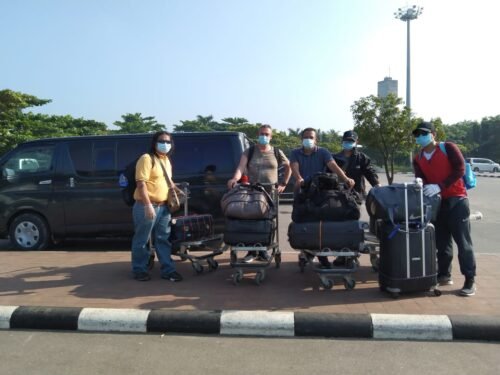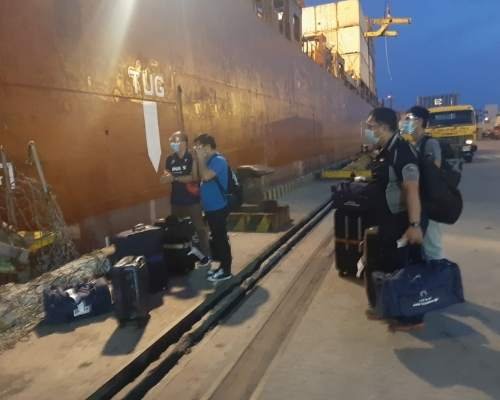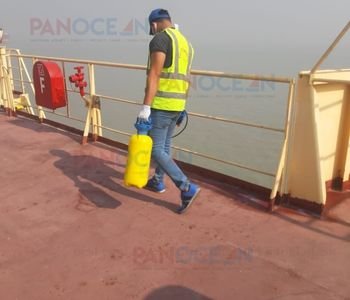Signal codes for storm: the weather signal in Bangladesh
Written by admin
Bangladesh extends from 20°34’N to 26°38’N latitude and from 88°01’E to 92°41’E longitude. Bangladesh is located in the tropical monsoon region. It’s characterised by high temperature, heavy rainfall, often excessive humidity, and fairly marked seasonal variations. From the climatic point of view, three distinct seasons are noticed in Bangladesh. The cool dry season from November through February, the pre-monsoon hot season from March through May. The rainy monsoon season lasts from June through October. The month of March may also be considered as the spring season, and the period from mid-October through mid-November may be called the autumn season. A lot of rain (rainy season) falls in the month of: May, June, July, August and September.
Tthe weather signal in Bangladesh: Classification of Cyclones
The following is the classification of the cyclone according to the intensity and velocity of the wind.
(a) Depression : Wind speed 31 miles/hr or 50 km/hr.
(b) Deep depression : Wind speed 32-38 miles/hr or 51-61 km/hr.
(c) Cyclone : Wind speed 39-54 miles/hr or 62-88 km/hr.
(d) Severe Cyclone : Wind speed 55-73 miles/hr or 89-117 km/hr.
(e) Cyclone with hurricane : Wind speed 74 miles/hr or 118 km/hr or more.
Warning Signals for Sea and River Ports
1. For sea ports the following 11 (Eleven) kinds of cyclone warning signals are used.
Warning Signal Number Explanation
(i) Distant Cautionary Signal No. I (i) There is region of squally weather in the
distance sea where storm may form.
(ii) Distant Cautionary Signal No. II (ii) A storm has formed in the distant sea.
(iii) Distant Cautionary Signal No. III (iii) The port is threatened by squally
weather
(iv) Local Cautionary Signal No. IV (iv) The port is threatened by a storm but it does
not appear that the danger is as yet sufficiently
great to justify extreme precautionary
measures.
(v) Danger Signal No. V (v) The port will experie3nce severe weather from
a storm of slight or moderate intensity, that is
expected to cross the cost to the South of the
port in case of Chittagong and Cox’s Bazar
and, East of the port in case of Mongla.
(vi) Danger Signal No. VI (vi) The port will experience severe weather from
a storm of slight or moderate intensity that is
expected to cross the coast to the North of the
port in case of Chittagong and Cox’s Bazar
and to the West of the port in case of Mongla.
(vii) Danger Signal No. VII (vii) The port will experience severe weathe rfrom
a storm of slight or moderate intensity that is
expected to cross over or near the port.
(viii) Great Danger Signal No. VIII (viii) The port will experience severe weather from
a storm of great intensity that is expected to
cross the coast to the South of the port in case
of Chittagong and Cox’s Bazar and to the East
of the port in case of Mongla.
(ix) Great Danger Signal No. IX (ix) The port will experience severe weather from
a storm of great intensity that is expected to
cross the coast to the North of the port in case
of Chittagong and Cox’s Bazar and to the
West of the port in case of Mongla.
(x) Great Danger Signal No. X (x) The port will experience severe weather from
a storm of great intensity that is expected to
cross over or near to the port.
(xi) Communication Failure Signal No. XI (xi) Communications with the Meteorological
warning centre have broken down and the local officers consider that a devastating Cyclone is following.
2. The following 4 (four) types of signals are meant for River Ports
(i) Warning Signal No. I (i) The area is threatened by squally winds of
transient nature.
(ii) Cautionary Signal No. II (ii) A storm is likely to stike the area (vessels of
65 feet and under in length are to seek shelter
immediately).
(iii) Warning Signal No. III (iii) A storm will strike the area (all vessels will
seek shelter immediately).
(iv) Great Danger Signal No. IV (iv) A violent storm will soon strike the area (all
vessels will take shelter immediately).
3. Every year 13-14 number cyclones (with wind velocity at 38 miles per hour) are formed in the Bay of
Bengal. Out of them 5 (five) attain the strength of cyclone (with wind velocity 39 miles per hour or more)
and cross the adjacent coastal areas. The possibility of any one such cyclone taking a turning and passing
over the coastal areas of Bangladesh always remains.
In the event of any inquiry related to weather condition of Bangaldesh, please feel free to raise us at info@panoceanbd.com
Related Articles
Related
Advantages of Appointing Ship Owners’ Own Agencies at Bangladesh Port
In the complex and competitive world of maritime shipping, the choice between engaging a Protection and Indemnity (P&I) correspondent and appointing a ship owner's agency at the port is critical. This decision impacts the efficiency and cost-effectiveness of...
Navigating Admiralty Law in Bangladesh
In the world of maritime trade, the legal framework of admiralty law plays a critical role in resolving disputes and upholding the rights of shipowners and charterers. In Bangladesh, a country with a rich maritime heritage and bustling ports like Chattogram and...
The Role of Local Shipping Agents and Pancean Ltd. in Bangladesh’s Maritime World
In the intricate realm of international trade and maritime transportation, the vibrant ports of Bangladesh serve as vital conduits of commerce, linking the nation to distant corners of the globe. Yet, these bustling maritime centers are not without their unique...









